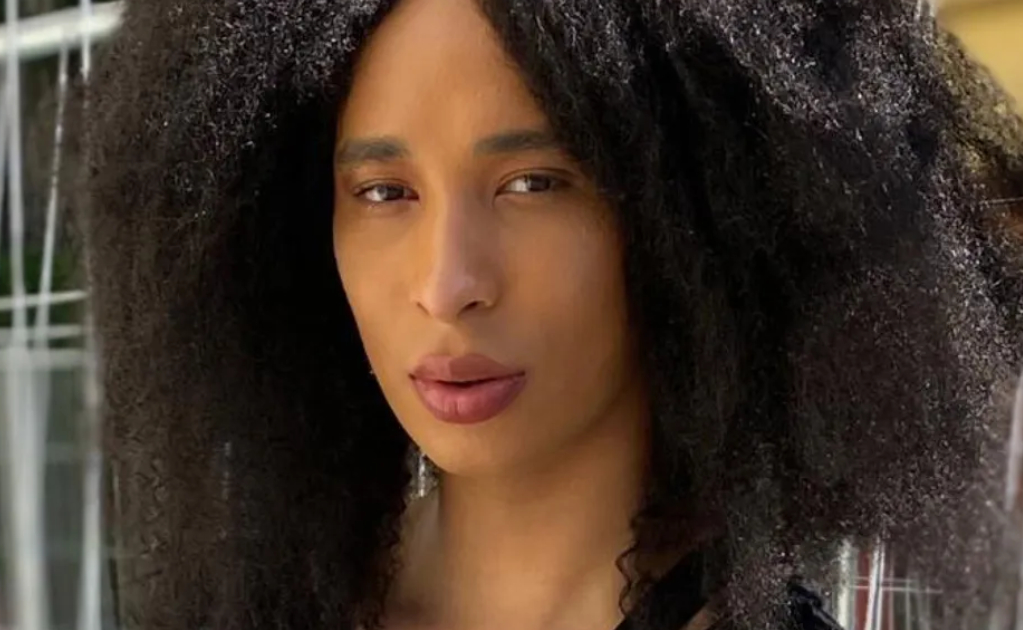Agnès Varda, Chiharu Shiota, Suzanne Valadon, Mari Chordà, Fernande Olivier and Danielle Brathwaite-Shirley. #8M is fast approaching and Articket wants to shine a light on some of the artists who will star in the 2024 exhibition schedule. If you are also someone who wants to get behind women’s art, this selection is for you!
Agnès Varda, at the CCCB
Photographer, filmmaker and artist, Agnès Varda (1928-2019) produced a work that, based on an incorruptible humanist perspective, has always been conceived as a gesture of communication. Her filmography contains more than 40 works that navigate between fiction and documentary. A journey in which titles such as Vagabond (1985), The Gleaners and I (2000) and Faces Places (2017) stand out, and allow us to trace a line of continuity between the forging of an aesthetic of modernity in the bosom of the Nouvelle Vague and the discovery of new possibilities during the explosion of digital image.

Varda was one of the few women of her generation who made a career as a filmmaker. A determined worker and artist of conviction, she displayed her visible mastery and expertise from her beginnings as a photographer in 1950 in her meticulous framing, her sense of detail and composition. In the early 2000s, she was no longer satisfied with cinema and ventured into museums, demonstrating her uncanny ability to capture the spirit of the times in a series of installations that never ceased to interact with her photographic and cinematographic work.
► From July 17 until December 8 the CCCB will dedicate a large exhibition to her. Five of the installations created by Agnès Varda during this stage of her career will be dotted around the route of an exhibition that will also have projection booths. In these booths you will be able to see some of the artist’s key pieces in the short film genre in their entirety. From its links to the history of art, to the social and political dimension of its discourse, the exhibition traces the great themes of a polymorphic work.
Chiharu Shiota, at the Fundació Antoni Tàpies
The Japanese artist Chiharu Shiota (Osaka, 1972) is the successor to Ana Mendieta and a whole generation of feminist artists of the early 1970s. Although she trained in Fine Arts in Japan, she continued to study in Berlin with Marina Abramović and Rebecca Horn, two key figures in the development of her artistic language known internationally for the creation of enigmatic and contemplative installations made with wool.

They are large-scale pieces that use sculptural elements, photography, drawing and video, creating poetic and delicate spaces of thread, usually black, often enclosing various personal, household and everyday objects inside: broken veins, shoes, worn clothes, burnt pianos, etc. Chiharu Shiota uses these objects, imagining the memories that are engraved in each one of them, given that she mainly deals with subjects such as memory and forgetting, life and death, and opportunities and hope. Chiharu Shiota’s installations aim to revive memories of the past and take the viewer to a dreamlike place, where a state of anxiety develops, due to an oppressive and claustrophobic atmosphere.
► From March 22 until June 23, Threads of memory will occupy the exhibition spaces of the Fundació Antoni Tàpies with a desire to enter into a direct dialogue with the Tàpies symbology and establish a game of correspondence. In this sense, an assertion of the links to the land, with the past and with memory and, at the same time, the exchange between presence and absence, will allow the artist to weave a re-reading of the past from evocation, with a look towards contemporaneity.
Fernande Olivier, at the Museu Picasso
Known for having been Picasso’s first muse and for having written about their relationship in two books, Olivier’s biography is so intense that it has even been novelised by the writer Isabel Clara-Simó in the book L’amant de Picasso, where the Valencian writer asserts her feminist spirit. You should know, however, that Fernande Olivier’s real name was Amélie Lang. Born in Paris in 1881, she had an unstable childhood and married a man who she left because he abused her. It was then that, to go unnoticed, she adopted the name of Fernande Olivier.

In 1904 she met Pablo Picasso, who had moved to Paris and lived in the Bateau-Lavoir building, which was frequented by writers and painters of the time and where Olivier often went to model. The relationship began almost immediately, right at the beginning of the painter’s Pink Period. Olivier became an important source of inspiration for him, dedicating works to him such as the sculpture Head of a Woman which is part of the collection of the Museu Picasso. Almost twenty years after their separation, Olivier published six chapters of a memoir of their relationship in the Belgian newspaper Le Soir, later collected in the book Picasso et ses amis (1933). The intervention of Picasso’s lawyers prevented her from publishing the rest of her story, which would only see the light of day in 1988 with Souvenirs intimes: écrits pour picasso.
► From June 7 to October 6, the Museu Picasso will host Fernande Olivier, Pablo Picasso and their friends which focuses on texts and documentation that tell us about the relationships they maintained and the long stays they both had in Horta de Sant Joan and Gósol. In addition to being a window through which you can get to know this geniusa little better, this exhibition – the first dedicated to her in Spain – also aims to be a tribute to her facet as an artist, beyond her relationship with Picasso.
Mari Chordà, at MACBA
Mari Chordà (Amposta, 1942) uses images, language and social action as material for her work and as an indestructible part of her life. The artist, writer, and poet or activist, form an indissociable bond that supports an attitude and convictions that determine the backbone of her work and her biography. An active and attentive observer of the reality that surrounds her, she needs to take part in it, agitate and subvert what she sees, from principles determined by feminism that arose as a response to the suffocating context of Francoism, but maintained over time in the face of a society that still needs to change many of its values and that must restore the visibility and recognition of women’s work.

The founder of Lo Llar in Amposta, a space that for two years was a cultural activation centre where concerts, exhibitions and other activities were promoted. After her move to Barcelona, she created laSal with a group of women, a library-bar designed as a space to talk, to receive support and advice, and which would lead to laSal, Edicions de les Dones, a publishing house of women’s literature and essays. A pioneer of her generation to express free female sexuality, talking about pleasure, motherhood and lesbian relationships in her painting and poetry, in 1964, while still studying at an anachronistic Faculty of Fine Arts in Barcelona, she painted her first Vagina. She paints body fluids, secretions, sexual organs and intercourse not through abjection, but with attractive shapes and colours which are very close to the visual sensibility of pop or psychedelia, in which she reclaims a full-blown eroticism.
► Mari Chordà… and many other things will be waiting to welcome you from July 6 until January 12, 2025 at MACBA. It is a co-production with the Tarragona Provincial Council Museum of Modern Art that you shouldn’t miss.
Suzanne Valadon, at MNAC
The artist Suzanne Valadon (1865-1938) was an emblematic figure of the bohemia of Montmartre at the beginning of the 20th century. Painter, drawer and printmaker, she practised all genres, from portrait and nude to still life and landscape. Born Marie-Clémentine Valade to a single mother, she had a tough childhood and an even tougher adolescence. She was an acrobat in one of the most popular circuses of the Belle Époque, the Molier, and was portrayed by some of the most prestigious artists of early modernity, such as Henri Toulouse Lautrec, Pierre Auguste Renoir, Berthe Morisot, Amadeo Modigliani, Paul Gauguin or Edgar Degas. Eventually, she ended up becoming an artist, and was admired by these illustrious colleagues and many other artists.

► MNAC, in collaboration with the Centre Pompidou-Metz and the Musée d’Art de Nantes, will study this female figure in an exhibition that you can enjoy from April 19 to September 1. The exhibition will bring together more than a hundred works, of which 48 can only be seen in Barcelona: oils on canvas and card, drawings and engravings, sculptures in plaster and bronze, as well as other documentary material that will allow you to gain a retrospective view, contextualised in the trajectory of a woman artist who played a significant role in avant-garde Paris.
Danielle Brathwaite-Shirley, at the Fundació Joan Miró
Danielle Brathwaite-Shirley is an artist based in London who works in different media, such as animation, performance and installation. Using a range of digital tools, especially early 3D games, she creates worlds that serve as archives of black trans experiences designed for black trans audiences. Her digital environments reconfigure historical power relations to centre the voices of that community, speaking to each other across temporalities and geographies, while ensuring that viewers who are not part of that community recognise their responsibility in their historical silencing and its continuous marginalisation.

► From July 19 until October 20, the Fundació Joan Miró will exhibit a space where the installation and interactive video games will present stories centered on the lives of black trans people. In Brathwaite-Shirley’s work, the visitors become characters in the games, and their decisions, or the position they occupy in the scale of privileges, affect the narrative that is being generated and determine which parts of the work is accessed. In this exhibition, individual responsibility can affect the chances of survival or create memory and a community of other bodies.




